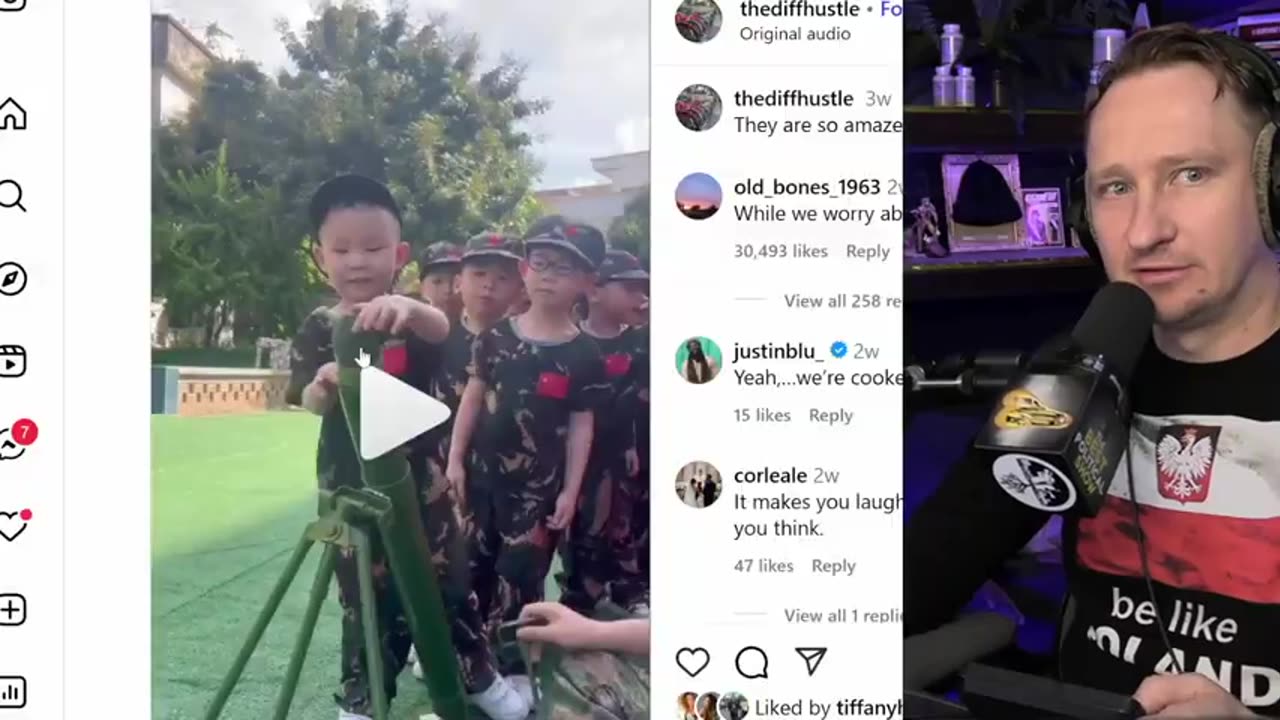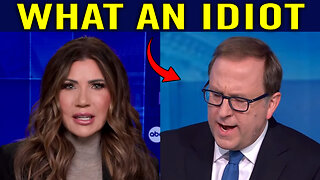Premium Only Content

UK Just CROSSED the RED LINE — Russia Drops CHILLING Warning to Britain & NATO
WeAreChange
June 30, 2025
UK Just CROSSED the RED LINE — Russia Drops CHILLING Warning to Britain & NATO
https://www.youtube.com/watch?v=uSFoWMPLqmo
NEW MERCH - https://thebestpoliticalshirts.com/
UK Just CROSSED the RED LINE — Russia Drops CHILLING Warning to Britain & NATO
Highlights
Ukraine conflict increasingly seen as a proxy war between NATO/US and Russia.
🚀 Russia uses advanced drone warfare to make slow but steady territorial gains.
🇬🇧 UK escalates tensions by purchasing 12 nuclear-capable F-35A jets.
⚠️ NATO’s fragmented support and withdrawal of missile defense systems weaken Ukraine’s position.
🤝 Former President Trump admits peace negotiations with Russia are extremely challenging.
🌍 Global sabotage attacks link US and Israeli intelligence operations in Russia and Iran.
💥 US domestic politics heat up with proposals for 500% tariffs on Russia-supporting countries.
Key Insights
🛡️ Proxy War Dynamics Undermine Direct Peace Efforts: The conflict in Ukraine functions as a proxy war where NATO, led by the U.S., and Russia use Ukraine as a battleground without direct engagement. This complicates peace negotiations because the interests of the proxy actors (NATO and Russia) often outweigh the needs and desires of Ukraine itself. Ukraine’s reliance on mismatched foreign equipment and insufficient personnel further weakens its position, increasing the likelihood of prolonged conflict.
🤖 Modern Warfare is Increasingly Sophisticated and Asymmetric: Unlike traditional warfare, the conflict features high-tech drone attacks and covert sabotage missions that are difficult to defend against. This shift underscores the evolution of warfare into a domain where smaller, cheaper technologies can have outsized impacts, as seen in the use of Chinese-made RC toy drones by Russian forces and sabotage operations linked to U.S. and Israeli intelligence.
🇬🇧 UK’s Nuclear Deterrence Move Escalates Global Tensions: The UK’s decision to acquire 12 nuclear-capable F-35A fighter jets marks the first nuclear enhancement since the Cold War, signaling a significant escalation in NATO’s military posture. This move is perceived by Russia as a direct threat, with Moscow warning it could destabilize NATO and provoke catastrophic consequences, thereby raising the risk of wider conflict.
⚔️ Withdrawal of U.S. Missile Defense Weakens Ukraine’s Strategic Position: The U.S. reallocation of 20,000 missile defense and anti-drone systems from Ukraine to the Middle East has left Ukraine vulnerable to Russian advances. This shift also raises questions about U.S. priorities and the sustainability of Ukrainian defense, particularly as Russia gains ground and threatens to expand territorial claims.
🤝 Diplomatic Failures Highlight Complexity of Conflict Resolution: Former President Donald Trump’s candid admission that negotiations with Putin are harder than expected reveals the deep-rooted challenges in resolving the conflict. Issues such as sabotage by intelligence agencies, conflicting interests among allies, and the difficulty in managing Ukrainian leadership complicate diplomatic efforts and prolong the war.
🌐 Global Interconnectedness of Conflicts Increases Risk of Wider War: The transcript reveals how conflicts in Ukraine, the Middle East, and Iran’s nuclear facilities are interconnected, with sabotage attacks and intelligence operations crossing borders. Russia and Iran’s alliance against common enemies highlights the emergence of multi-front tensions that could spiral into a broader global conflict if not carefully managed.
💰 Economic Sanctions as a Tool and Their Limitations: Senator Lindsey Graham’s proposal for a 500% tariff on countries supporting Russia’s war economy, especially China and India, demonstrates the use of economic sanctions as a strategic tool to pressure adversaries. However, the effectiveness of such measures depends on broad international cooperation and risks pushing sanctioned countries closer to Russia, potentially exacerbating global divisions.
🙏 Human Cost and Cultural Impact of War: The narrator’s emphasis on Slavic lives and culture highlights the often-overlooked human dimension of geopolitical conflicts. The destruction of young lives, families, and communities by advanced warfare technologies underscores the urgent need for peace and the failure of current global institutions to prevent suffering.
🕵️♂️ Intelligence Operations Play a Critical and Controversial Role: The involvement of U.S. and UK intelligence agencies in covert sabotage and sabotage drone attacks complicates the conflict further. While these operations aim to weaken adversaries, they also undermine trust and make diplomatic solutions more difficult, pushing the world closer to escalation.
🎯 NATO’s Internal Divisions and Europe’s Defense Autonomy: The transcript touches on the possibility of the U.S. withdrawing from NATO or reducing involvement, with European nations increasingly financing their own defense. This dynamic could reshape the alliance’s future and the global balance of power, but it also risks instability if not coordinated properly.
Transcript
Follow along using the transcript.
-
 2:28:05
2:28:05
Rolling With You
13 hours agoQ After Hours Ep. 7: The Middle East Flashpoint & Controlled Chaos
623 -
 11:36
11:36
tactical_rifleman
11 days agoNever Run Out Of Ammo | Magazine Pez Dispenser | Tactical Rifleman
39K3 -
 26:11
26:11
Upper Echelon Gamers
16 hours ago $2.52 earned"Her" Wasn't Fiction - Its Real
14.8K3 -
 3:11
3:11
Canadian Crooner
2 years agoPat Coolen | It's Beginning to Look A Lot Like Christmas
72.8K17 -
 5:22
5:22
DropItLikeItsScott
1 day ago $2.61 earnedThe GLOCK Killer? Shadow Systems XR920 / Would You Choose It?
19.9K8 -
 2:06:15
2:06:15
BEK TV
1 day agoTrent Loos in the Morning - 12/01/2025
27.9K1 -
 LIVE
LIVE
The Bubba Army
23 hours agoDIDDY'S NEW DOC EXPOSED! - Bubba the Love Sponge® Show | 12/02/25
1,285 watching -
 40:10
40:10
ZeeeMedia
15 hours agoFDA Memo: "Covid-19 Vaccines Have Killed American Children" | Daily Pulse Ep 153
34.3K38 -
 LIVE
LIVE
Pickleball Now
7 hours agoLive: IPBL 2025 Day 2 | High-Intensity Matchups Continue in the Indian Pickleball League
97 watching -
 15:11
15:11
itsSeanDaniel
1 day agoAngry Liberal Defends ILLEGALS, Then Gets CALLED OUT For It
59.7K29